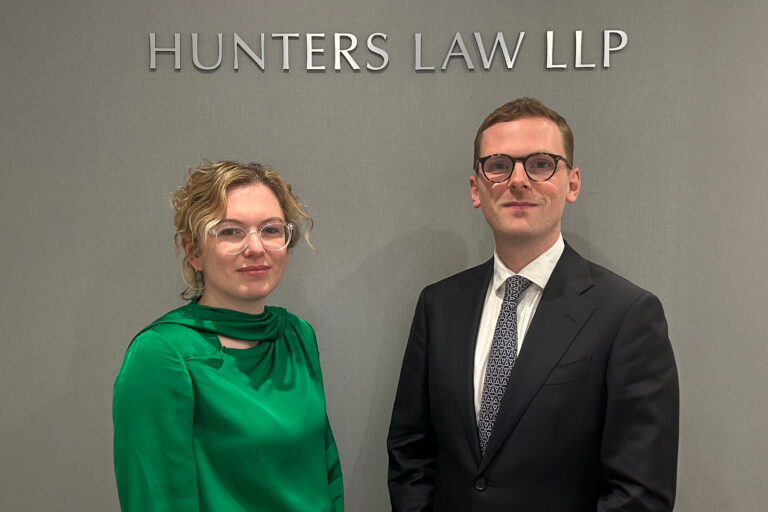Polly Atkins discusses child maintenance in high net worth cases in ThoughtLeaders4 HNW Divorce magazine

Polly’s article was published in ThoughtLeaders4 HNW Divorce magazine, Issue 13 (June 2023), and can be found here.
TYVM Mostyn
In the fast-paced, 6-minute unit, cost-conscious world we operate in, it is common to stumble across a mysterious acronym. You stare at the screen wondering what on earth this means, enlisting the assistance of unfortunate colleagues in the vicinity – minds race, ideas are thrown about and someone finally lands on the answer. BINGO. No, that one isn’t an acronym
The latest set of acronyms comes courtesy of Mr Justice Mostyn, in the sphere of child maintenance in HNW cases.
The process began with the introduction of the HECSA – Household Expenditure Child Support Award – in Collardeau-Fuchs v Fuchs [2022] EWFC 135, where the parties’ pre-nuptial agreement addressed the wife’s personal claims but left open provision for children.
A couple of years earlier in CB v KB [2019] EWFC 78, Mostyn J had set out that in every case where the gross annual income of the non-resident parent does not exceed £650,000, the starting point should be the result of the [CMS] formula ignoring the cap on annual gross income at £156,000. Following CB v KB, that approach was widely though not universally adopted. In Collardeau-Fuchs however, Mostyn J clarified that the CB v KB approach was obviously intended to apply forcefully to those cases where the court is considering child support as a subsidiary claim within a wider financial remedy claim, rather than in Schedule 1 cases, or in cases such as the one before him, where there is no corresponding spousal claim being heard at the same time.
Mostyn J then introduced the HECSA, which should apply instead of the formula in such cases. Its essential principle is that it is permissible to support the child by supporting the mother, such that child maintenance can extend beyond the child’s direct expenses to meet the expenses of the mother’s household insofar as such expenses are not directly personal to her with no reference to the children. In fixing the level of the HECSA, the court should not necessarily replicate the parties’ standard of living prior to separation, or the payer’s standard of living, but the award should be judged by reference to them. It should be at such a level that the mother is not burdened by unnecessary financial anxiety and should be the result of a broad-brush assessment of the mother’s budget. On the facts, Mostyn J awarded a HECSA of £554,494 pa for two children.
In March 2023 the HECSA reappeared in Re Z (a child) (No 4) (Schedule 1 award) [2023] EWFC 25 where the father had annual income of c.£2.7m. Cobb J applied Mostyn J’s approach in a Schedule 1 claim, awarding a HECSA of £148,250 pa for one child. Cobb J (rightly, in the author’s opinion) agreed with Mostyn J that references in the Schedule 1 caselaw to a carer’s allowance were outdated, but recognised that the principle remained important – an appropriate child maintenance award would meet the expenses of the mother’s household to the extent that she was not able to meet them. Cobb J also confirmed his agreement with Mostyn J that the CMS formula should provide guidance where the payer’s income exceeds £165,000 only in cases where is a spousal maintenance claim, and not in Schedule 1 cases.
In April 2023 Mostyn J offered further guidance on HECSAs in James v Seymour [2023] EWHC 844 (Fam), introducing three further acronyms: Child Support Maintenance (‘CSM’), the Adjusted Formula Methodology (‘AFM’) and the Child Support Starting Point (‘CSSP’).
The case was an appeal, by the (remarried) wife, of HHJ Vincent’s refusal to apply the CB v KB approach to her application for increased child maintenance. In upholding HHJ Vincent’s decision, Mostyn J took the opportunity to give wide-ranging guidance on child maintenance claims where the payer’s income exceeds £156,000.
Crucially, he differentiated between two types of child maintenance claim:
- The HECSA, which applies where there is no spousal maintenance claim (e.g. as it is Schedule 1 claim (as in Re Z (No 4)), because the applicant has remarried (as in James v Seymour), or because spousal maintenance is precluded by a PNA (as in Collardeau-Fuchs v Fuchs). A HECSA can include the reasonable costs of the applicant’s household where the applicant cannot meet them, but not costs unrelated to the applicant’s role as carer of the child. In such cases, the CMS formula is irrelevant and maintenance should be determined by reference to the applicant’s budget in the context of all the relevant circumstances. (In both Collardeau-Fuchs v Fuchs and Re Z (No 4) a 15% cut was applied to the applicant’s budget to determine the appropriate level of maintenance, but that is not referenced in James v Seymour).
- CSM, Child Support Maintenance, where the maintenance is simply a contribution to the children’s direct and indirect costs. Mostyn J acknowledged criticisms of the CB v KB approach, in particular that it produced very high figures, especially in families with one or two children. However, given the benefits of having a formula for child maintenance where the payer earns more than £156,000 pa, Mostyn J developed a new one the Adjusted Formula Methodology (‘AFM’). The AFM operates on the payer’s ‘exigible’ income (‘E’) their gross income adjusted for pension payments and other children in their household (as in the CMS formula), but also for school fees payments. The AFM, and the tables it produces, are set out in an appendix to the judgment. The AFM produced a ‘CSSP’, Child Support Starting Point, described by Mostyn J as a ‘loose’ starting point, such that it is still necessary to review the applicant’s budget and carry out the discretionary exercise. Note, however, that the AFM is said not to apply in variation cases, where the starting point should normally be the original order adjusted for inflation, nor where there are 4 or more children, income is over £650,000, the income is largely unearned or the payer lives on capital. In such cases the discretionary exercise should be carried out without a starting point.
Mostyn J’s guidance appears helpful in providing a digestible, step-by-step approach to child maintenance where the payer’s income exceeds £156,000. However, whether we will see wider judicial uptake of the bifurcated approach to child maintenance, such that we will need to advise clients on whether they have a claim for CSM or a HECSA, and what CSSP will be produced by the AFM, remains to be seen





